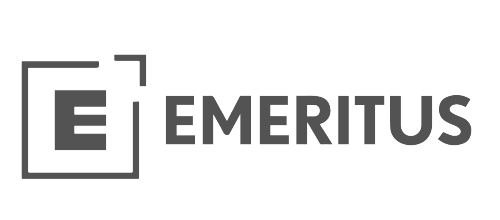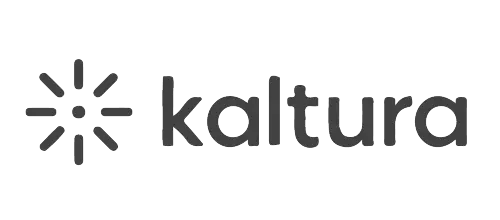Journey Through Words: Captivating Subtitles for Travel Documentaries
Subtitles always add a friendly and helpful touch to your finished product. Reaching an international audience is the first obvious benefit. Also, add subtitles or closed captions. Especially when the speaker may need help understanding non-native speakers of the language.





















Encourage People to Stick Around Until the Very End
Immediately after they see your material, grab their attention. The last thing you want is for viewers to scroll past the video you worked on for hours. In just a few clicks, Wavel's Magic Subtitles tool adds animated subtitles to your videos, making them more engaging and accessible.
Word-By-Word Subtitles in One Click.
Let us do the work for you. Magic Subtitles simplifies creating captions by using AI to auto-generate the video transcript and then animating the subtitles with a single click. Choose from several popular text styles for travel documentaries or alter them to match your brand's colors and fonts.
Documentary Subtitle Localisation
Even for monolingual captioning, localization is essential when writing quality documentary subtitles. As with any academic writing, it's vital to ensure spellings are consistent with the target audience, i.e. US English versus UK English. Similarly, if your documentary features a lot of statistics, conversions should be made to be relevant to your viewers.
Travel or cultural documentaries are often multilingual and may require some translation and burned-in subtitles, also known as forced subtitles. This process involves transcribing foreign speech in the video, then translating, time coding and formatting captions in a style that complements the look of the Film. Wavel Studio provide multilingual subtitling at highly competitive prices in over 30+ languages. If you have a documentary or video which requires documentary subtitles and translation, then we can help. Try us today to see the benefits we can bring to your video.
Generate Subtitles for your Travel Documentary with Wavel Studio



Using Subtitles As A Window To A New World
Subtitles are a rich tool to open you up to films that reflect other rich languages, cultures and Travel Documentaries. Filmmakers like Bong Joon Ho, the director of Parasite, noted that subtitles can open up movies to a much more global audience. In his Golden Globes acceptance speech after winning Best Film, he said in Korean (which was translated by director Sharon Choi), "Once you overcome the one-inch tall barrier of subtitles, you'll be introduced to so many more amazing films." And if the subtitles pair seamlessly with a foreign language show or movie you're watching, chances are that the translators who worked on it are well-versed in the language and culture, which is always a recipe for success. In an age of increasingly global content, subtitles are a tool to learn about other cultures and communities, something that we all appreciate in an age of remote and hybrid work. So, whether you're looking for the next Squid Game or a fun way to test your language skills, there's an exciting world of TV and movies waiting if you just turn on subtitles!
Add Subtitles to Travel Documentaries.
Adding subtitles to videos is standard, with over a billion videos supported by subtitles. Yet, how can we do it without risking a phone crash while editing or a PC overheating from installing cumbersome video editing software?
Never again will you be concerned about having a powerful enough computer to add animated or not animated subtitles to your movie. To automatically generate and animate subtitles online, use Magic Subtitles, an AI-powered tool from Wavel Studio. Automatically generate subtitles, then edit them to ensure they properly match your video's sounds.
You can also manually construct your subtitles if you choose. To make your subtitles as accurate as possible, pay attention to how your video plays and add text as necessary. You have total control over your material using Wavel Studio.
You may change your subtitles' font, size, colour, positioning, and backdrop all in one location using Wavel Studio. You can resize your video or move the subtitles around to appear precisely where needed.
Create a common word-by-word effect with animated subtitles on social media and podcasting websites like TikTok, Instagram, Twitter, and YouTube. Subtitle animations can be animated in various ways, including colour, reveal, highlight, and bounce.
Do you already have an SRT file on hand that contains your subtitles? SRT embedding into videos is also supported by Wavel Studio. Simply upload your SRT file, and Wavel Studio will take care of the rest, directly integrating the subtitles into your video. It is that simple.
Even among viewers without hearing impairments, closed captioning is growing in popularity. Today's viewers who watch videos on their phones in crowded areas or outdoors, where it may be difficult to hear the audio, need captions. Wherever your video is posted, you may add and change captions using the Wavel Studio subtitle editor. Whichever type of video you produce, our subtitle video tool was created to make the material more captivating, accessible, and engaging.
Why are AI Subtitles by Wavel Studio useful for Travel Documentaries?
Travel documentaries are a popular genre of film that allows viewers to experience different parts of the world through the eyes of the filmmaker. Subtitles are an important feature of travel documentaries as they help the viewer to understand what is being said in a foreign language, and to fully immerse themselves in the culture and environment being depicted on screen. Now, while AI may be better and faster in turning audio into timed text, as well as in cutting a transcript into properly segmented and timed subtitles, it still needs help for translating spoken language into more compact written language. This is the “expert in the loop” workflow.
Accuracy: It is essential that the subtitles accurately reflect what is being said on screen. This means that the subtitles need to be well-translated and timed correctly to match the spoken words. “AI software to partially automate the process is ever more intelligent but needs supervision.”
Clarity: The subtitles should be easy to read and understand, with clear font and appropriate size. They should also be placed in a position that does not obstruct the viewer's view of the footage.
Context: Travel documentaries often include cultural references that may not be immediately apparent to viewers from different backgrounds. Subtitles can provide additional context and explanations of these references, helping to enhance the viewer's understanding of the documentary. Using AI and an “expert in the loop” workflow, you can save 80% or more and reduce the cycle time to a minimum, while maintaining a consistent high quality. AI software to partially automate the process is ever more intelligent but needs supervision – whether you are an occasional producer looking for subtitles, a subtitle professional or a broadcaster, there will be cases where it is better to insource the process.
Consistency: Subtitles should be consistent throughout the entire documentary, in terms of font, size, color, and position. This helps to create a seamless viewing experience for the viewer.
Style: The style of the subtitles should be appropriate for the documentary 's tone and style. For example, a travel documentary that focuses on adventure and exploration may benefit from more dynamic subtitles, whereas a documentary that explores a particular culture may benefit from more subdued subtitles.
Localization: If the documentary is intended for a global audience, subtitles may need to be translated into multiple languages to ensure that viewers from different countries can fully engage with the content. More and more occasional producers right up to large broadcasters are insourcing the process, helped by technology, but insourcing or outsourcing is by far the most controversial issue in the domain, and something we explore further in this blog. It’s a delicate balance between cost, quality and delay. How to deal with regular expressions, slang, “translating” spoken language into written language?Automatic speech recognition nowadays works 4x faster than real-time and has a word error rate of 2%-5% depending on the quality of the speech. This is critical: 2% results in a reasonable post-editing time (2 min per min), while 5% is the limit (6 min per min or more).
By taking these factors into account, filmmakers can create subtitles that enhance the viewer's experience and provide a deeper understanding of the documentary's subject matter.


